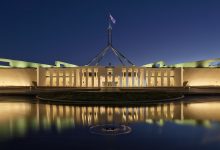After bringing down John Howard, Kevin Rudd, Julia Gillard, and Malcolm Turnbull – twice – Australia’s energy and climate debate is basically broken.
The Federal Government may yet pay a very high price for the political chaos and petty revenge at the next election, but in the meantime business and households are left to pick up the pieces.
And of course, chaos has a real and substantive cost which we are all paying for through our power bills right now. The government knows this, because last year when Josh Frydenberg was Energy Minister he commissioned a report to justify the need to introduce the National Energy Guarantee (NEG).
According to analysis by the Centre for International Economics, electricity prices are between $27 to $40 per megawatt-hour higher than they need to be. This is because the policy chaos whipped up by backbenchers in the Federal Government is turning off international investors, who are wary about putting their capital into such a volatile political environment.
Mr Frydenberg’s own colleagues – who claim to care very deeply about power prices – brought down their own government over their own policy. The NEG was far from perfect, but many people across the sector put in a lot of effort to make it workable. It had the potential to end the chaos that has dogged the energy sector for around 15 years.
And if we need more evidence that chaos has a cost, we can look to the modelling done for the NEG. To justify the need for policy, the modelling suggested it would cut bills by around $150 a year (though the Renewable Energy Target will actually deliver bigger savings next decade).
The government’s own analysis suggests that the chaos of changing government and junking the NEG will leave households with power bills that are $150 higher than they need to be.
The inescapable conclusion is that a small group of vindictive politicians would prefer to block all action on climate change and get revenge on Malcolm Turnbull rather than reduce power prices.
Instead of having the kind of robust policy debate we need to have, we are talking about royal commissions and major market intervention – because the Federal Government simply doesn’t have many levers left to pull which will make any difference to people’s power bills. It is well beyond a joke.
A few simple truths
The bloodletting will only end when politicians accept a few simple truths. The first is that new investment in the lowest-cost energy generation is critical to driving down power prices.
The second simple truth is that most Australians want more renewable energy, not less. Voters are confused about the complexity of energy policy, which is one of the reasons Tony Abbott’s carbon tax campaign was so effective – they didn’t understand what a carbon price was or why they needed it.
The difference that Abbott and his supporters need to accept is that voters intuitively ‘get’ renewables, particularly when they are also the cheapest new power option we’ve got right now.
RET shines on through the chaos
The one bright spot in the energy debate has been the investment which has flowed into wind and solar over the last few years, thanks to the one bipartisan energy policy which has managed to survive the climate wars in Canberra.
Since first being established by John Howard in 2001, the Renewable Energy Target (RET) has endured through many political brawls. It has really hit its straps in the last year with over $10 billion committed in large wind and solar projects around the country.
These new projects will come online over the next two years, lowering wholesale power prices and the average household power bill. Analysis done for the NEG showed that the RET will push down household power bills by hundreds of dollars a year. And according to Green Energy Markets, wholesale power prices will halve by around the end of the decade.
Investment in energy generation does not need new subsidies, but it does need certainty. Market intervention and royal commissions deliver the opposite of that. Without energy policy certainty beyond 2020, the new investment under the RET could come to a grinding halt, allowing wholesale prices to rise again over time to politically unsustainable levels.
Scott Morrison is our fifth PM in the last decade and the idiocy of the political debate around energy has investors spooked.
The longer the Federal Government ignores the few simple truths outlined above and continues to tinker at the edges with market interventions, the worse our energy crisis becomes. It also means investors will place a greater reliance on state and territory governments to fill the policy void and provide the certainty they need.










